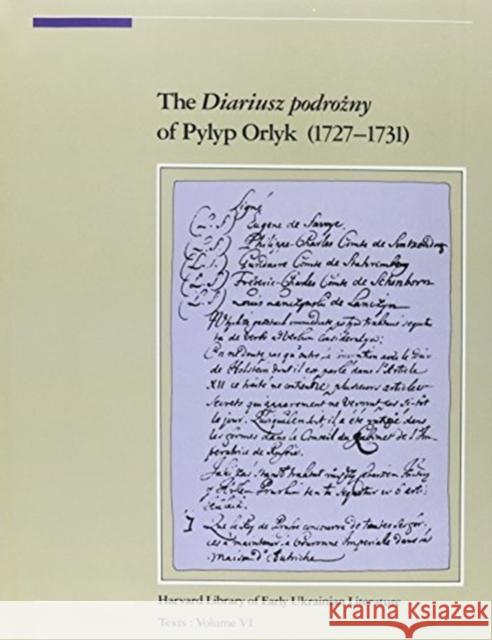The Diariusz Podrozny of Pylyp Orlyk » książka
The Diariusz Podrozny of Pylyp Orlyk
ISBN-13: 9780916458263 / Polski / Twarda / 1988 / 950 str.
This continuation of Pylyp Orlyk's "Diariusz Podrozny" encompasses the dramatic years 1727--1731. From his honorary" confinement in Ottoman Thessalonica, the Ukrainian Hetman-in-exile tried to influence on his behalf the European powers whose representatives were gathered at the Congress of Suissons. To this end, Pylyp Orlyk managed to use the services of France, England, the Netherlands, and especially Sweden and Holstein, who served as his intermediaries with Russia. Of special interest are Orlyk's entries for 1729--1730. It was at this time that Pylyp's son Hryhor quit his military service with King August 11 of Saxony--Poland and became an important player in France's relations with the East. Father and son met in Thessalonica in 1730 and henceforth cooperated in furthering their respective political ventures.
The preface by Omeljan Pritsak places the "Diariusz" within the context of Orlyk's vision of the Ukraine's past, present, and future.
Omeljan Pritsak is the Mykhailo S. Hrushevs'kyi Professor of Ukrainian History at Harvard University and Director of the Harvard Ukrainian Research Institute. The "Harvard Library of Early Ukrainian Literature" is one portion of the Harvard Project in Commemoration of the Millennium of Christianity in Rus'--Ukraine sponsored by the Ukrainian Research Institute of Harvard University. The "Library" encompasses literary activity in Rus'Ukraine from its beginning in the mid-eleventh century through the end of the eighteenth century. Included are ecclesiastical and secular works written in a variety of languages, such as Church Slavonic, Old Rus', Rurhenian (Middle Ukrainian), Polish, and Latin. This linguistic diversity reflects thecultural pluralism of Ukrainian intellectual life in the medieval and early-modern periods. The Library consists of three parts. The Texts series publishes the original works, in facsimile whenever appropriate. Two other series--"English Translations and Ukrainian Translations"--contain translations of the original works. Each volume begins with an introductory essay by a specialist. The two translation series also include indices, as well as a concordance table to the companion volume in the texts series. A cumulative index to the entire Library is planned.











